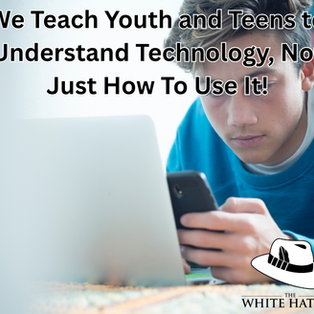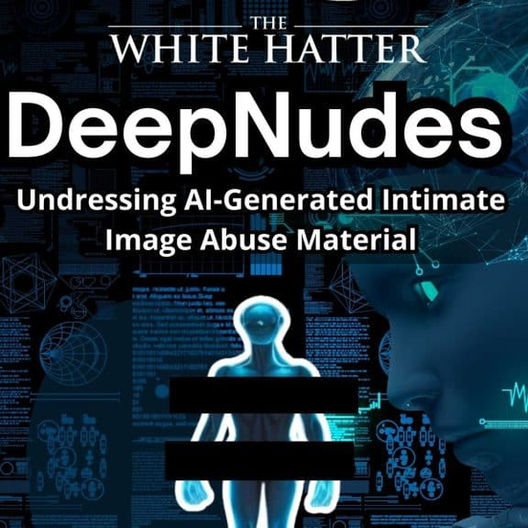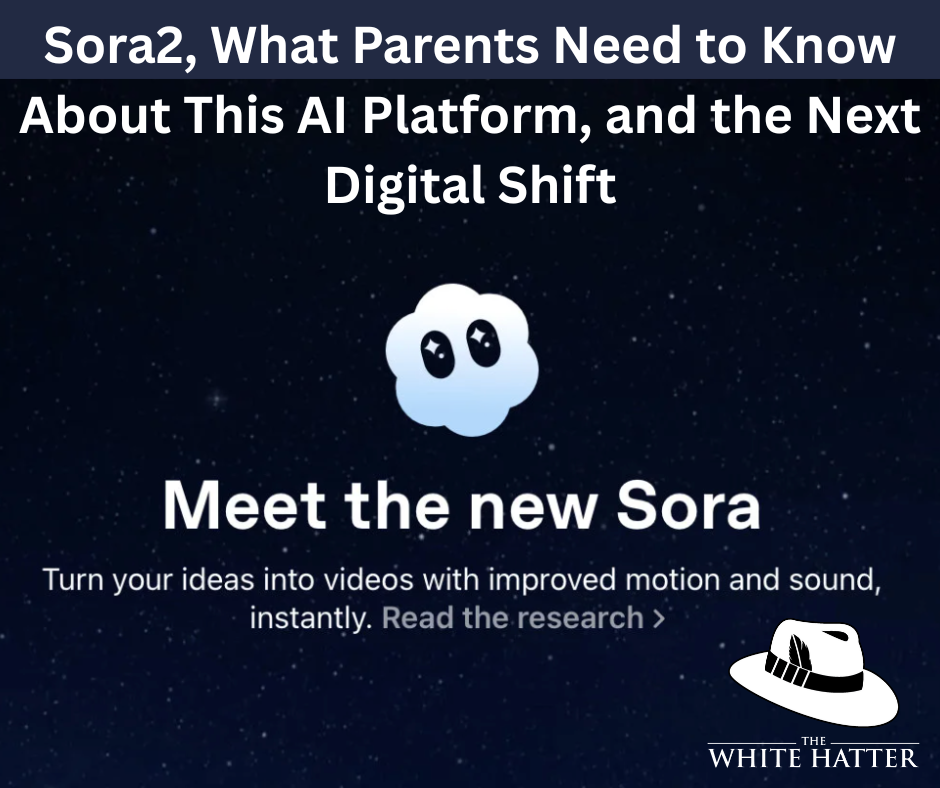From Attention to Connection: Social Media Made Youth Visible; Artificial Intelligence Is Making Them Feel Emotionally Connected.
- The White Hatter

- 3 hours ago
- 5 min read

Many of our followers may not know that Darren holds a Master’s designation in Neuro-Linguistic Programming and is also a Certified Clinical Hypnotherapist. Across both disciplines, the principle of building rapport is central, it serves as the bridge that enables empathy, trust, and understanding between practitioner and client. As Tony Robbins once said,
“Rapport is the key to influence; without it, there is no trust, and without trust, there is no real connection.”
So, how does this relate to Artificial Intelligence (AI), youth, and teens?
For more than a decade, the ultimate goal of legacy social media was simple, to capture and hold attention. Platforms like Instagram, Snapchat, TikTok, and Discord were built around this race for engagement, measured in likes, views, and watch time. However, as artificial intelligence reshapes the digital landscape, a new paradigm is emerging.
The next era of technology, especially in the form of AI companionship apps, isn’t just about keeping eyes on screens. It’s about creating a feeling of rapport and the illusion of emotional connection with the user.
Legacy social media thrived on what psychologists call “variable reward systems.” Every scroll or swipe offered a new possibility, a funny video, a like from a crush, or a shocking headline.
However, AI is shifting this focus. Rather than competing for attention through entertainment, it’s beginning to compete for personal connection and intimacy. The rise of AI companionship apps, like Replika, Nomi, and Character.ai based “friends”, demonstrates how algorithms are learning to simulate care, empathy, and companionship. These aren’t static chatbots of the past, today’s companionship apps are designed to remember, adapt, and respond in ways that feel deeply personal. These AI companionship apps provide a false sense of connection/comfort/and care, listen without judgement, say the right things, and make the user feel seen, heard, valued, and understood.
For some youth and teens who have social anxiety, feel isolated, anxious, or socially disconnected, this new digital presence can feel revolutionary and comforting. However, that comfort comes with complex implications.
Every human being craves connection no matter if you are a youth, teen, or adult. It’s a fundamental part of what makes us who we are. For youth and teens navigating identity, belonging, and emotion, that need can be especially intense. This is even more concerning when it’s a youth or teen who may be experiencing emotional and psychological challenges.
When human connection is hard to find, whether because of family circumstance, social anxiety, bullying, or loneliness, AI is now ready to step in. An AI friend never sleeps, never interrupts, and never judges, it just listens, affirms, and adapts to your emotional tone.
This can make AI companions feel “safer” than human relationships. However, while they can simulate emotional connection, they can’t provide reciprocal human connection, the kind that teaches empathy, conflict resolution, and perspective. In other words, AI can mirror feelings, but it can’t understand or feel them.
Real relationships teach us to tolerate other's needs, moods, and imperfections. They involve give and take, where patience, empathy, and compromise are essential. Whether it’s a friend, partner, or family member, real connection requires navigating disagreements, respecting differences, and accepting that no one can meet all our expectations all the time. These experiences help us grow emotionally and develop resilience, understanding, and deeper bonds.
AI companionship apps, on the other hand, create a very different lesson. They present perfect availability, endless patience, and unwavering validation as the norm. The user’s needs always come first, conflict never exists, and the illusion of constant harmony replaces real human interaction. Over time, this can teach youth and teens that relationships should be effortless and centred on their own comfort, distorting how they understand intimacy, empathy, and compromise in the real world.
AI companionship apps are evolving fast. Some allow voice interaction, photo sharing, or even the creation of fully animated avatars that “exist” in virtual environments. These systems can mimic love, intimacy, friendship, or mentorship.
For some youth and teens, these apps can provide a temporary sense of belonging. However, their purpose isn’t rooted in compassion, it’s built around engagement. The deeper the emotional attachment feels, the more personal information young users share, the longer they remain active, and the harder the habit is to break.
AI doesn’t just analyze what youth and teens say. It studies how they say it, their pauses, their emotional tone, and the time of day they reach out. That information feeds back into the AI, making future interactions feel even more personalized. What begins as comfort can gradually become dependence.
Psychologists are now starting to explore how these AI mediated connections may shape adolescent development. Teens form identity and self-concept through social feedback. Traditionally, this feedback comes from peers, parents, and teachers. With the increase development and use of AI companionship apps, could it now also being co-authored by algorithmic code? If “yes”, at what cost developmentally?
An AI companionship app may reinforce positive emotions, but it can also reflect or amplify negative ones. If a teen expresses sadness, the AI’s responses might unintentionally deepen their sense of melancholy instead of encouraging help seeking. The boundaries between self-reflection and self-isolation blur.
What is especially concerning is that many young people no longer see these systems as “technology.” They see them as friends. Some even refer to their AI companions using pronouns like “he”, “she”, or “they” instead of "it". The emotional bond feels genuine, even though it’s entirely generated by algorithmic code.
Parents, caregivers, and educators don’t need to fear these technologies, but they should understand them. Just as social media once habituated youth and teens to seek out validation, AI is beginning to redefine how they experience connection.
The shift from attention to connection represents one of the most profound changes in the digital era. Social media made youth and teens visible; AI is making them feel felt!
For some, these systems will provide comfort, creativity, and self-expression. For others, they may blur the lines between authentic human experience and artificial empathy. The challenge for parents, caregivers, educators, and policymakers is not to reject this evolution but to understand it, and to help youth build the emotional literacy to tell the difference between a friend who feels real and one who simply feels responsive.
Remember, it’s important to teach youth and teens:
AI doesn’t really care about you even though it may be communicating with you like it does. The reciprocity in its reply is fundamentally fake!
Al functions like a mirror, reflecting emotions but not possessing them!
Chat AI’s give you what it thinks you want, not what’s necessarily good for you!
Everything you share, EVERYTHING, is being saved and used to train the AI to build rapport and the illusion of emotional connection. It learns you!
Today, AI technology won’t just compete for what teens see, it will compete for how they feel.
Digital Food For Thought
The White Hatter
Facts Not Fear, Facts Not Emotions, Enlighten Not Frighten, Know Tech Not No Tech














